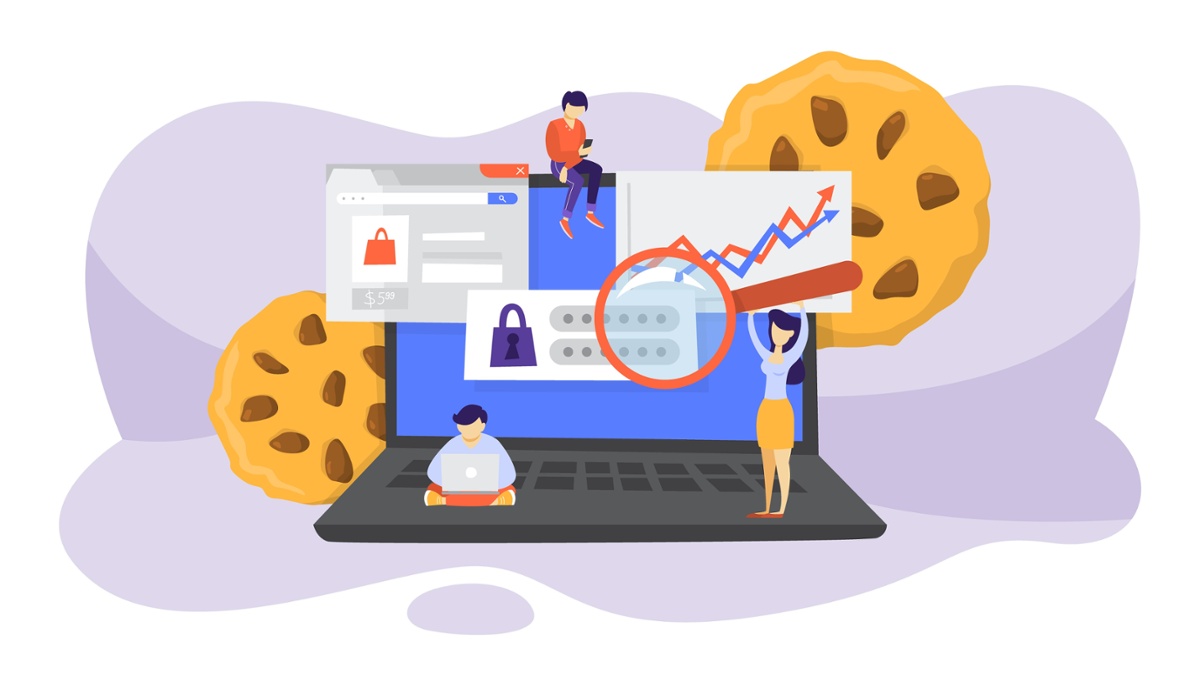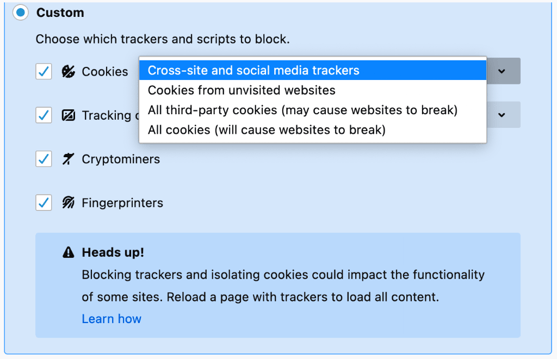Goodbye, Cookies: 3 Digital Marketing Strategies for the Future

The disappearance of third-party cookies has everyone’s attention. And with Google launching its tracking protection to 1% of the browser's users, and the remaining to be eliminated by the end of 2024, companies can’t afford to look away any longer.
Do you have a strategy in place for increasing your customer base without third-party cookies? If not, it’s time to prepare with 3 digital marketing strategies we’ve compiled to guide you to a more successful future.
To understand how to prepare, let’s break down the cookie debate.
What’s all the fuss about cookies?
Digital marketing professionals know the importance of cookies to track web performance and use behaviors of visitors to a website. This type of tracking is commonly used by tools such as Google Analytics and is considered a first-party cookie.
First-party cookies are not the target of the cookie debate but rather third-party cookies. These are cookies that website owners place on their websites from a separate entity (or third party) such as Google, Facebook, or any number of online sites. Third-party cookies are primarily interested in building digital profiles of a user. That information is used to help advertisers target users with more relevant content.
Consumers and many in the political landscape have used this one point—building digital profiles—to expose potential data privacy issues.
Thus, the general public has demanded transparency. More than transparency, online users want control of what happens to their data. Governmental organizations have weighed in defense of their constituents with the creation of the General Data Protection Regulation (GDPR) in the EU and the California Consumer Privacy Act (CCPA) in California, legislating the privacy and security of user data. Enormous fines are heaped on companies who don’t comply.
In response to this demand for more transparency, Safari and Firefox blocked third-party cookies by default, and Google Chrome rolled out tracking protection to 1% of the browser's users as part of its Privacy Sandbox initiative to eliminate all third-party cookies by the second half of 2024. Since Chrome is the preferred browser for the majority of web traffic, the disappearance of cookies hasn’t been at the forefront of marketers’ minds –until now.
Cookie blocking is not a zero-sum game. There are various levels of cookie blocking and tracking, and it’s important that the user be allowed to manage this. Cookies can and do provide a much more relevant online experience for sites that use them appropriately. As shown, Firefox provides several levels of cookie customization to ensure users have control of their browsing experience:

There are differences between cross-site cookies and social media trackers.
Cross-site tracking cookies can be "deposited" or placed on your computer (even sometimes without permission) and can be "harvested" by the next website that you visit – unless you have stipulated in your browser that you do not want any cookies to be deposited on your computer.
If, for example, you visit newspaper.com and they have a cookie for weather.com, that cookie would be a third-party cookie. If "cookies from unvisited websites" is chosen (as seen in the above dropdown menu), that cookie would only be blocked if you have never visited weather.com. However, it would be allowed if you have previously visited weather.com.
With the "all third-party cookies" option enabled, the weather.com cookie would always be blocked. But if you visit weather.com directly, the cookie is now a first-party cookie and will be allowed. Remember, the cookie controversy is only surrounding third-party cookies, not first-party cookies.
Social media trackers are a different kind of cookie. Social media trackers cannot be "harvested" by the next website that I visit – unless it is another social media website. Social networks place trackers on other websites to follow what you do, what you see, and what you watch online. This allows social media companies to collect data about your browsing history and improve their ad targeting. Even if you don’t use a social network, a site with a social media tracker can still collect data about your browsing habits.
So, what’s next for a world without cookies?
The future of the marketing world without third-party cookies is uncertain, but two initiatives are on the horizon hoping to offer the solution: Unified ID 2.0 and Google Privacy Sandbox.
Unified ID 2.0
The Trade Desk in conjunction with IAB Tech Labs has teamed up to create an alternative to third-party cookies built on an open-source ID framework. This framework is “[b]uilt from hashed and encrypted email addresses, [and] will remain open and ubiquitous while introducing significant upgrades to consumer privacy and transparency.” The initiative vows to be secure, independently governed with checks and balances, and allow for consumers to adjust preferences and opt-out as desired.
The premise of this alternative is rooted in single sign-on (SSO) and establishing a clear conversation with consumers. Skepticism crept up around cookies because no one clearly explained to consumers how they work, leaving them shrouded in mystery. The general public became increasingly leery of third-party cookies, despite the fact they are not necessarily harmful. Rather, in most cases, cookies provide a more tailored web experience for users.
If this new technology becomes the web wave of the future, the partners behind Unified ID 2.0 want to make sure consumers know what they are agreeing to, where their information is going, and how to manage their preferences. But in order for this initiative to become the winning solution to a cookie-less web, it must be adopted by major publishers to see traction.
To take a deep dive into the Unified ID 2.0 technology, you can check out this webinar featuring leaders who are paving the way for this alternative.
Google’s Privacy Sandbox
Google is the major player on the scene, anticipating their Privacy Sandbox will be the answer for the absence of cookies. On their project page, Google explains the goal of the Privacy Sandbox:
“In the ideal end state, from a user’s perspective, there won’t be any difference between how the web of today and the web in a post-Privacy Sandbox world work, except that they will be able to feel confident that the browser is working on their behalf to protect their privacy and when they ask questions about how things work, they will like the answers they find….[I]f a given user is either uncomfortable with or just doesn’t like personalized advertising, they will have the ability to turn it off without any degradation of their experience on the web.”
This initiative is similar to Unified ID 2.0; however, in this scenario, Google gains more data, more control, and an even greater competitive advantage. With over 1.5 billion Gmail users, Google already has a base for their cookie alternative, whereas Unified ID 2.0 will need buy-in from major players.
What can we do?
Third-party cookies may be disappearing, but first-party cookies aren’t going anywhere.
Consumers expect a tailored experience from companies they willingly give their information to, so leveraging your own data for marketing personalization has never been more important.
We’ve put together 3 ways you can harness your own data as a savvy marketer, preparing for a world without third-party cookies.
1. Strengthen In-House Knowledge
Without third-party data at your disposal, you’ll need keen marketing minds at the table to keep your strategy moving forward. Whether you choose to hire for these positions internally or partner with a marketing agency to guide your team, beefing up your marketing know-how is imperative to stay at the forefront of what’s ahead and brainstorm solutions for the impending gaps.
An essential piece to creating alignment between your sales and marketing teams is a CRM (Customer Relationship Management) system. HubSpot and Salesforce are two software systems that help you integrate your data and optimize your workflow. If your sales and marketing teams are still functioning off of excel spreadsheets, it’s time to upgrade!
2. Utilize Contextual Advertising
You shouldn’t waste money and resources randomly placing your ads across the web. You want to be strategic. If you no longer have third-party cookies at your disposal to track the activity of those who are interested in your product or service, using contextual advertising is the next best tactic.
According to HubSpot, contextual advertising is “a form of personalized advertising that enables your Google PPC ads to appear on relevant sites.” This works by specifying keywords and topics that are associated with your ad. Google will then analyze web content and match your ads with coordinating searches.
For example, if you sell running shoes and someone reads a blog about the best locations to run in your area, your ad will most likely appear to that user.
3. Prioritize Social Listening
Social media is a critical platform to see what people are saying about your business and the products or services your business provides. Customers also respond positively to companies who listen to and interact with their customers.
In their blog on the subject, HubSpot lists four reasons every company should engage in social listening and highlights tools, such as Sprout Social, that can help you monitor your social media accounts more efficiently.
The Future Comes Fast
Regardless of which technology is deemed the solution for the future of marketing and publishing on the web, it will be adopted quickly. Just as companies swiftly adapted to the guidelines established by the GDPR, marketers will pivot to whatever is next.
In the meantime, beefing up your own data should be your focus. Implementing creative ways to increase the contacts in your CRM database today by using form fills, chatbots, and the like, will put you ahead of the game tomorrow – in a world without cookies.

